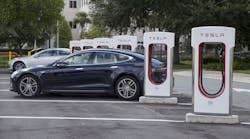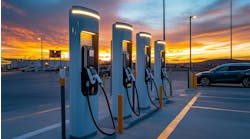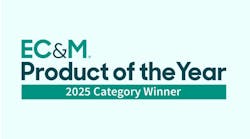The EV industry stands at a crossroads, embroiled in a transformation poised to rival the great standards battles. Much like VHS squared off against Betamax in the past and Apple's Lightning connectors succumbed to USB-C recently, electric car standards find themselves amid their own pivotal conflict. This shift may sow confusion and frustration in the near term, but its ultimate aim is to pave the way for a more stable future.
Until a few months ago, the way people plugged in their electric vehicles (EVs) seemed pretty much settled. Tesla cars used the Tesla charging standard, and most other EVs used the CCS1 adapter. Then, suddenly, there was a shift in the marketplace as several major automakers announced their adoption of Tesla's charging standard. First, Ford announced that they'd be moving towards Tesla's standard, followed by General Motors, and more recently, Honda has also announced its transition to the Tesla connector.
BriteSwitch, a firm specializing in capturing local, utility, state, and federal rebates/incentives for businesses, breaks down how this change will affect the EV charging market and what it means for the rebates offered to help build out the charging infrastructure across North America.
The CCS1 Connector Versus the NACS Connector
The Combined Charging System (CCS) connector has been used in North American cars since 2013. CCS 1 uses a J1772 connector for Level 2 charging and two pins are added at the bottom of the connector for high-speed DCFC charging. For a long time, this connector was expected to win out in the battle to become the de facto standard as nearly every manufacturer in North America, except Tesla, supported it.
The other main competitor to the CCS connector was the proprietary Tesla charging standard. Tesla first debuted this charging technology in 2012 as an easy way to charge up their cars for both Level 2 and DCFC charging. The NACS reuses the same pins for AC and DC charging, meaning fewer materials and resulting in a lightweight cable and smaller adapter that's easier to use.
In 2022, Tesla renamed the connector to the "North American Charging Standard" (NACS) and opened the standard up for anyone to use. At the time, no major car manufacturer took them up on the offer. Then, in May of this year, several car manufacturers announced they planned to transition to the NACS connector. At the same time, SAE International, a standardization body in the auto industry, stated they are fast-tracking the standardization of the connector, which will be officially referred to as SAE J3400.
Impact on EV Charger Rebate Programs
Rebates play a pivotal role in expanding EV charging infrastructure by reducing the high upfront costs of installing charging solutions in both public and private applications. However, these programs are complex and cumbersome, often accompanied by pages of rules and guidelines. How will this transition to the NACS connector affect these vital rebate programs and the eligibility for EVSE incentives?
Level 2 – Residential Rebates
The transition from the CCS to the NACS connector doesn't significantly impact residential applications. According to RebatePro for EV Chargers, only 2% of programs explicitly require the J1772 connector. This lack of impact makes sense because, for private-use chargers, the programs don't have to worry about interoperability; people will purchase the charger that works for their specific car.
Level 2 – Commercial Rebates
For level 2 chargers installed in commercial applications, the transition to NACS also has limited impact. Only 6% of programs explicitly require a J1772 connector in order to get Level 2 commercial charger rebates.
It doesn't mean it will be all smooth sailing, though. Some programs may need to revise or clarify their rules, primarily those that exclude chargers with "proprietary plugs." This wording likely aimed to exclude the Tesla charging standard implicitly. Now, with the NACS connector on its way to standardization, rule adjustments are necessary.
DCFC – Level 3 Commercial Rebates
The situation becomes more complicated when it comes to DCFC charger incentives. In standard rebate programs, only 6% require the CCS 1 connector, aligning with the requirements for Level 2 chargers. However, things become less straightforward when we look at programs funded under the Federal National Electric Vehicle Infrastructure Formula (NEVI) Program.
The NEVI program allocated $5 billion to build the charging infrastructure across the nation's most driven roadways. Rule 23 CFR 680 of the program requires "each DCFC charging port has at least one permanently attached Combined Charging System (CCS) Type 1 connector and is capable of charging a CCS-compliant vehicle." While NACS connectors can be installed as part of projects using the NEVI-funded rebates, the installations must still meet program requirements, including the presence of CCS Type 1 connectors.
Each State implements the NEVI-funded programs independently, with the ability to add additional rules and guidelines. Some states have opted to increase the requirement over the Federal standards. For example, the recently closed Kentucky NEVI Program added its own requirement that "Each Port must be equipped with an SAE CCS 1 connector and also be capable of charging vehicles compliant with the NACS charging standard." That means in Kentucky, the NEVI funded installations must support both CCS1 and NACS. Similar changes have been seen in the Texas and Washington NEVI programs.
Approved Product Lists May Have to be Updated
Even though the change in the standardized connector may not directly impact the program eligibility, it can still make the rebate process more challenging. According to RebatePro for EV Chargers, 20% of EV charger rebate programs in North America require that a charger appear on an approved list to qualify for the incentive. Unfortunately, many programs choose to maintain their own lists rather than use the standardized ENERGY STAR list (which does not have a requirement on the type of connector). As EV charger manufacturers release new versions of their products that are compatible with NACS, they'll likely have to be added to these vendor lists.
It's Not Going to Change Overnight
The electric vehicle industry finds itself at a transformative moment reminiscent of past battles between technological standards. The shift from CCS to NACS connectors may introduce confusion and frustration in the near term, but it is a step toward simplifying the experience for EV drivers in the long run.
Thankfully, it is likely to be a gradual transition. Most car manufacturers who have announced support for NACS signaled they intend to start the switchover with their 2025 cars. That means there will still be plenty of vehicles on the road that will need the CCS connectors to top up. Going forward, it's important that the charging infrastructure supports both technologies.
Randy Young is the operations manager at BriteSwitch, a company that specializes in finding and capturing rebates for businesses. He can be reached at [email protected].







